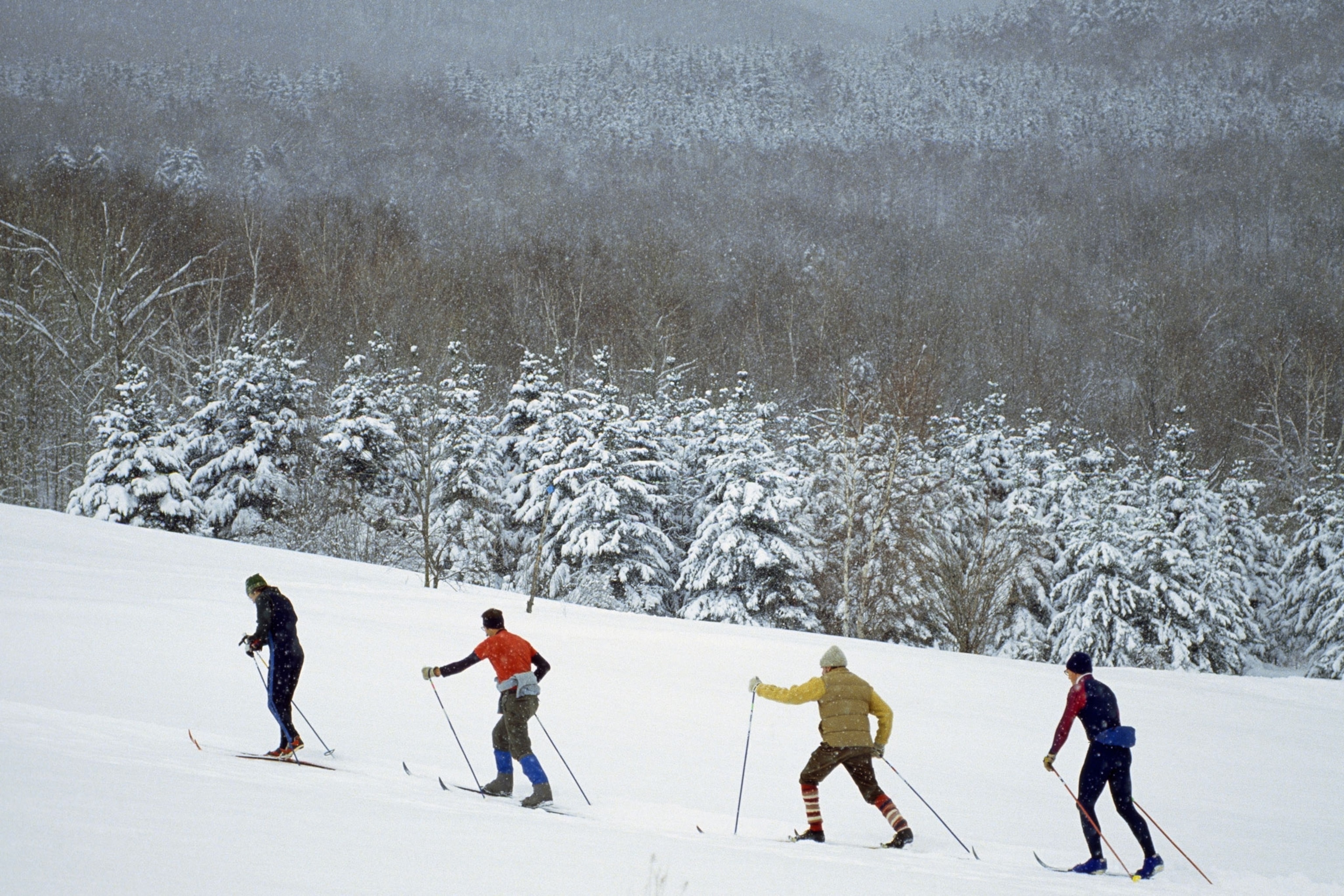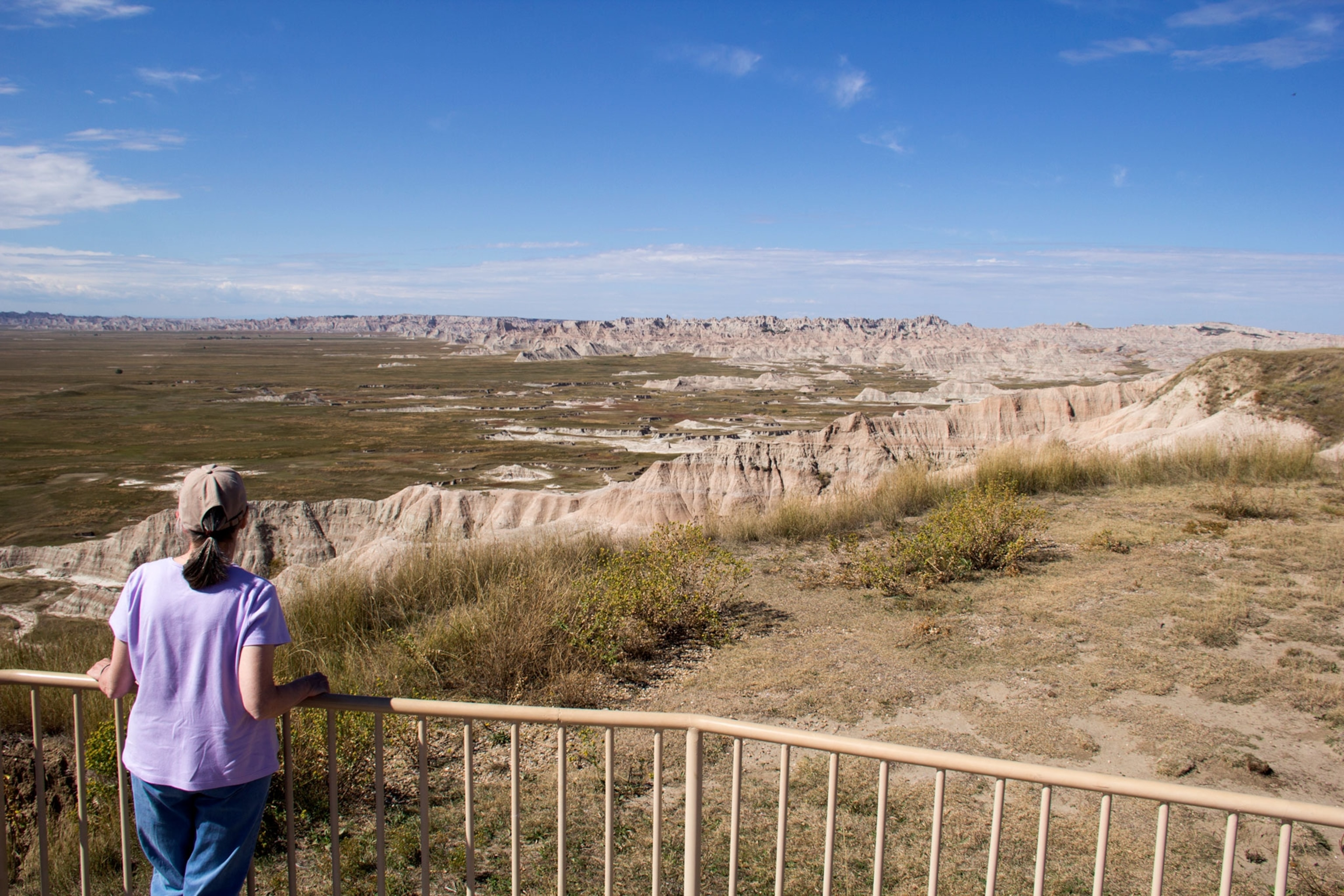
Doctors Are Prescribing Park Visits to Boost Patient Health
Sometimes called ParkRx, new programs aim to get people outdoors.
South Dakota doctors routinely write prescriptions for everything from painkillers to ointments. This year, however, they’ll have a more novel option at their disposal: park prescriptions. Printed on a notepad with an “Rx” symbol in the top-left corner, a park prescription instructs a patient to take one free day at “any South Dakota state park or recreation area.”
Doctors get these prescriptions through a new program run by the South Dakota Game, Fish and Parks and the state‘s Department of Health. Although the initiative was piloted in 2015, this is the first year that prescriptions will be available statewide.
“We did a bigger push here in May,” said program coordinator Nikki Prosch. There are commercials and marketing and doctors can sign up to participate online. “We're opening it to any healthcare provider.”
The South Dakota program is one of dozens of other similar efforts across the country, ranging from “Docs in the Park” in Baltimore to “Prescription Trails” in Albuquerque. Catherine Carlton helps run ParkRx.org, a network linking park prescription initiatives, and she says the movement has grown dramatically since it began in 2009.
Carlton also highlighted the National Park Service’s second annual park prescription day this spring. Admission at all national parks was free, and there were organized events at more than 60 of them. The gathering at Crissy Field in San Francisco drew over 3,000 people.
Since South Dakota entered the ParkRx fray, Prosch has shipped hundreds of prescriptions to eager doctors. But she says it’s still too early to predict exactly what kind of impact the program will have. Vermont, however, offers one example of what’s possible.
Green Mountain Get-Up
Vermont’s park prescription program is in its third year, and demand continues to be strong.
“We're getting lots and lots of requests from doctors,” said Janet Franz, the chair of the Vermont Governor's Council on Physical Fitness and Sports. Similar to South Dakota, the council partners with the state parks system to provide free park prescriptions that doctors can give to patients. They have a stock of 12,000. “We expect to give all the ones we have away,” Franz predicted. “Within a few weeks.”
Michael Seaton is a pediatrician in Middlebury, Vermont. He learned about park prescriptions last year, and he signed up immediately. “I think it's a fantastic program,” he said. “It gives me another way to talk about physical activity.”
Seaton says he now prescribes park visits regularly. Although he’s not sure how many end up getting used, he says patients always take them. “They absolutely jump at the opportunity.”
Franz and her team do track the numbers. According to their tally, 40 of Seaton’s prescriptions were turned in last year. Across Vermont, the total was nearly 700 (of 12,000 prescriptions given out). While Franz hopes that number will continue to grow, she believes that the more important metric is actually how many prescriptions doctors give out to patients (they haven’t tracked that data point yet but hope to this year).

“The most successful thing,” she says, “is to encourage a conversation between doctors and their patients about exercise.”
The Science of Exercise
Franz and Prosch share a common inspiration for starting their respective park prescription programs. They both attended workshops put on by another initiative called Exercise is Medicine (EIM), which has the broader goal of encouraging healthcare providers to consider and include exercise as part of patient treatment.
EIM began in 2007 as an affiliate of the American College of Sports Medicine, says co-founder Bob Sallis, and has since spread to dozens of countries. “It's frustrating to me that we're so focused on pills and procedures,” said Sallis, who is also a physician with Kaiser Permanente in California. “Virtually everything that I see in my clinical practice could be helped by more physical activity.”
Sallis would like to see doctors treat exercises as vital signs of sorts. “It's a clinical indicator of health and wellness,” he said, adding that many Kaiser Permanente health centers have started asking patients basic questions about their exercise habits. “It can be very predictive.”
Aside from workshops, EIM has also collaborated with other organizations and companies, like the U.S. Professional Tennis Association and Adidas, to help spread its message. Another major component of EIM, says Sallis, is lobbying to get physical trainers covered by health insurance. “I’d much rather see them with a personal trainer than putting them on medications,” he said. But that will likely require legislation.
In the meantime, Prosch says parks offer an accessible outlet for physical activity, especially in states like South Dakota. “We're so rural. Not every community necessarily has a gym or access to a fitness facility,” she said. “So we've been promoting the parks as kind of an outdoor gym for the state.”
But park prescriptions aren’t a cure-all, either.

“We’ve had some [doctors] who give them out to their staff instead of their patients,” said Franz. “That is not the purpose of the program.” She also notes one doctor who said that the program didn’t suit him well because many of his patients are poorer or don’t drive, and can’t get to the parks.
Sean Wrenn is a surgeon at the University of Vermont Medical Center in South Burlington, Vermont, and has had a related problem. His patients are frequently restricted after surgery, and it doesn’t always make sense to prescribe a park visit. And, even when he does, he says there’s not always time for an accompanying conversation. The prescription is often just tucked into discharge paperwork. But Wrenn is nonetheless a strong proponent of the idea.
“Usually the things we prescribe are pills that people have to swallow or mandates or regiments,” he said. “This is something a bit more fun.”
Still, there’s uncertainty about the long-term effects of the park passes, which are one-off, rather than recurring. South Dakota is trying to encourage repeat use of the parks by also making the prescriptions applicable toward an annual pass. With the state’s program still in its infancy, no one has taken advantage of that yet. But Prosch remains optimistic that the ParkRx movement will have a lasting impact.
“Hopefully it's promoting a little more life-long physical activity,” she said. “[At the very least] it's the starting point or platform to start talking to patients about physical activity.”








